Ultimate Guide to Outdoor Activities for Kids
Ultimate Guide to Outdoor Activities for Kids
Discover 50+ engaging outdoor adventures that get children active, promote healthy development, and create lasting memories through nature-based learning and fun activities.
:max_bytes(150000):strip_icc()/shutterstock_1017803569-b90e793abc8849bda08558663911984d.jpg)
Why Outdoor Activities Matter More Than Ever
In our increasingly digital world, getting children outdoors has become more crucial than ever before. Outdoor activities for kids are not just about having fun – they're fundamental building blocks for healthy physical, mental, and emotional development. Research consistently shows that children who spend regular time outdoors develop stronger immune systems, better motor skills, improved creativity, and enhanced problem-solving abilities.
The modern child faces unprecedented challenges: increased screen time, reduced physical activity, and limited exposure to natural environments. These factors contribute to rising rates of childhood obesity, attention disorders, and mental health issues. However, engaging outdoor activities provide a powerful antidote to these contemporary challenges, offering children opportunities to explore, learn, and grow in ways that indoor environments simply cannot replicate.
Outdoor activities encompass a vast spectrum of experiences, from simple backyard games to elaborate wilderness adventures. Whether it's building forts in the woods, identifying birds during nature walks, or learning teamwork through outdoor sports, these activities create lasting memories while fostering essential life skills. The beauty of outdoor activities lies in their accessibility – they can be adapted for any age group, skill level, or budget, making them universally available tools for child development.
This comprehensive guide presents over 50 carefully selected outdoor activities designed to engage children of all ages in meaningful, fun, and educational experiences. Each activity is chosen not only for its entertainment value but also for its potential to contribute to a child's physical fitness, social skills, cognitive development, and emotional well-being. From toddlers taking their first nature walks to teenagers embarking on camping expeditions, there's something here for every child and every family.
Quick Start Guide
New to outdoor activities with kids? Start with these three simple activities: a nature scavenger hunt in your backyard, a family walk to the nearest park, and an outdoor picnic. These low-commitment activities help establish outdoor routines while building confidence for more adventurous pursuits.
The Life-Changing Benefits of Outdoor Activities for Children
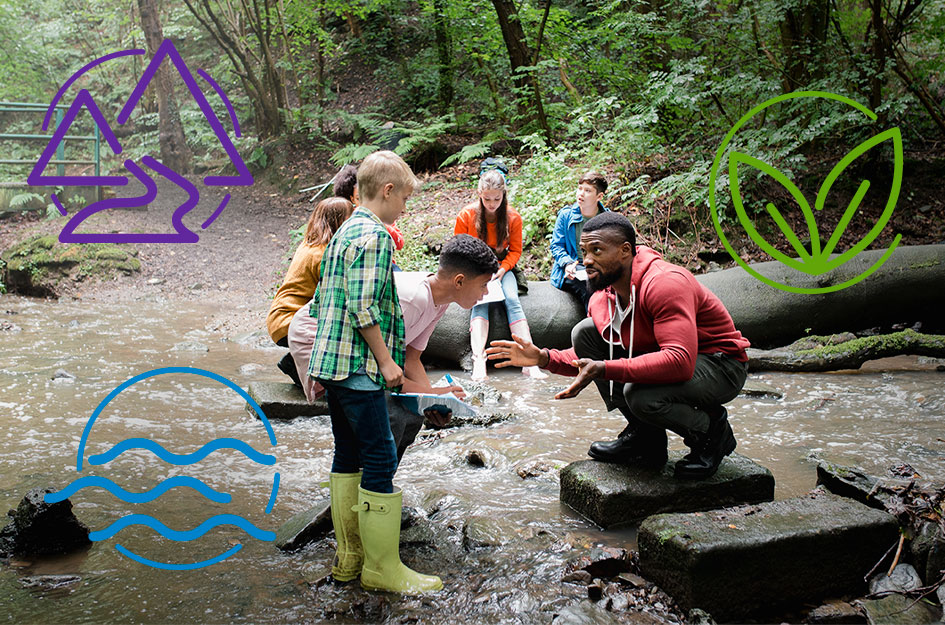
Physical Development Benefits
- Enhanced Motor Skills: Outdoor activities naturally develop both gross and fine motor skills through varied movements and challenges.
- Improved Fitness: Regular outdoor play increases cardiovascular health, muscle strength, and overall physical endurance.
- Better Balance and Coordination: Navigating natural terrain and engaging in active play improves spatial awareness and coordination.
- Vitamin D Production: Sunlight exposure helps the body produce essential vitamin D for bone health and immune function.
Cognitive Development Benefits
- Enhanced Creativity: Unstructured outdoor play stimulates imagination and creative problem-solving abilities.
- Improved Focus: Nature experiences help restore attention and reduce symptoms of attention disorders.
- Scientific Thinking: Outdoor exploration naturally encourages observation, hypothesis formation, and experimentation.
- Academic Performance: Studies show outdoor education programs improve academic achievement across multiple subjects.
Emotional & Social Benefits
- Stress Reduction: Natural environments lower cortisol levels and promote emotional regulation.
- Social Skills Development: Group outdoor activities build cooperation, communication, and leadership skills.
- Self-Confidence: Overcoming outdoor challenges builds resilience and self-esteem.
- Environmental Connection: Early nature experiences foster lifelong environmental stewardship.
Long-term Health Benefits
- Reduced Obesity Risk: Active outdoor play helps maintain healthy weight throughout childhood and beyond.
- Better Sleep Patterns: Physical activity and natural light exposure improve sleep quality and circadian rhythms.
- Stronger Immune System: Exposure to diverse microorganisms in nature builds robust immune responses.
- Mental Health Resilience: Regular nature exposure reduces risks of anxiety and depression later in life.
Research Spotlight
A landmark study by the University of Essex found that just five minutes of outdoor exercise can improve self-esteem and mood in children. Meanwhile, research from the University of Illinois demonstrated that children with ADHD showed significant improvement in attention and focus after spending time in natural outdoor settings compared to urban environments.
The American Academy of Pediatrics now recommends that children spend at least one hour daily in unstructured outdoor play, recognizing its critical importance for healthy development.
Nature Exploration Activities: Discovering the Natural World
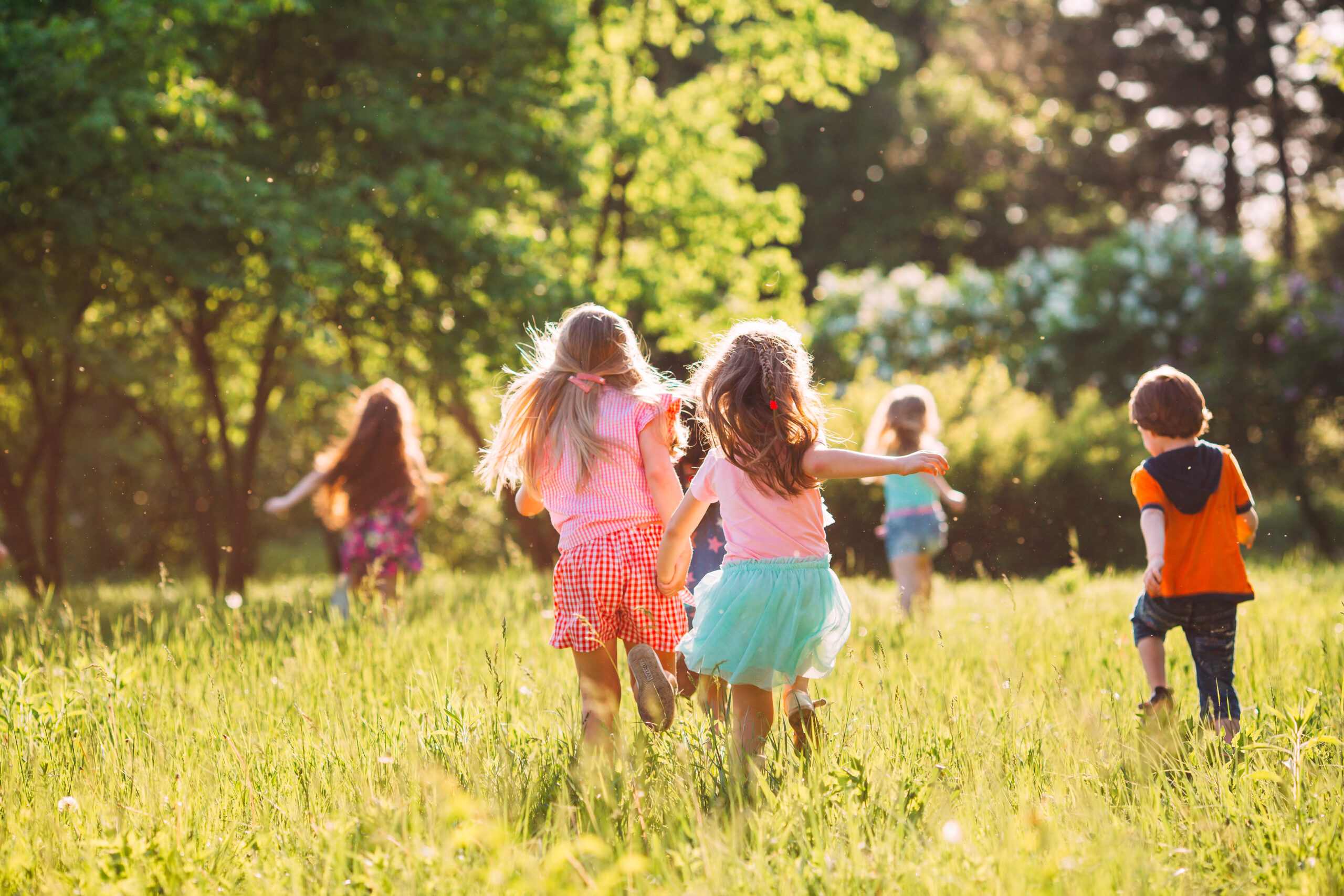
Nature exploration activities form the foundation of outdoor education, fostering curiosity, observation skills, and environmental awareness. These activities can be adapted for any environment, from urban parks to wilderness areas, making them accessible to families regardless of their geographic location.
Nature Scavenger Hunts
Create themed scavenger hunts that encourage children to actively search for and identify natural objects. This activity combines physical movement with learning, making it perfect for developing observation skills and nature knowledge.
Seasonal Hunt Ideas:
- • Spring: New buds, flowering plants, bird nests, fresh leaves
- • Summer: Colorful flowers, insects, different tree shapes, water features
- • Fall: Colored leaves, acorns, pinecones, migrating birds
- • Winter: Evergreen trees, animal tracks, frost patterns, winter birds
Advanced Variations:
- • Photo scavenger hunts using smartphones or cameras
- • Texture hunts (smooth, rough, soft, prickly objects)
- • Color-based hunts finding natural items in specific colors
- • Shape hunts identifying geometric patterns in nature
Wildlife Observation and Bird Watching
Introduce children to local wildlife through structured observation activities. Bird watching serves as an excellent entry point, as birds are visible in most environments and offer diverse behaviors to observe.
Getting Started with Bird Watching:
- Essential Equipment: Child-friendly binoculars, field guides, notebooks, colored pencils
- Best Times: Early morning and late afternoon when birds are most active
- Recording Observations: Draw birds, note behaviors, track species over time
- Creating Bird Lists: Maintain ongoing lists of species observed in different locations
Plant Identification and Botanical Exploration
Develop children's botanical knowledge through hands-on plant identification activities. This builds scientific observation skills while fostering appreciation for plant diversity and ecological relationships.
Leaf Collection
Gather, press, and identify different leaf shapes and types
Plant Pressing
Create botanical art by pressing flowers and leaves
Tree Mapping
Create maps showing tree species in local areas
Rock and Mineral Exploration
Geology becomes accessible and exciting through hands-on rock and mineral activities. Children develop classification skills while learning about Earth's processes and materials.
Rock Hounding Activities:
- Rock Collection: Gather specimens from different environments
- Classification Games: Sort rocks by color, texture, size, and type
- Simple Tests: Scratch tests, magnet tests, float tests
- Rock Art: Paint collected rocks with nature scenes
- Crystal Growing: Simple at-home crystal experiments
- Fossil Hunting: Search for fossils in appropriate areas
Nature Crafts and Creative Activities

Nature crafts combine creativity with outdoor exploration, allowing children to transform natural materials into beautiful, functional, and meaningful objects. These activities develop fine motor skills, artistic expression, and environmental appreciation while creating lasting keepsakes of outdoor adventures.
Leaf Art Projects
- Leaf Rubbings: Place paper over leaves and rub with crayons to reveal textures and patterns
- Leaf Collages: Create pictures and patterns using different colored and shaped leaves
- Leaf Garlands: String leaves together to create decorative nature garlands
- Leaf Crowns: Make natural crowns using large leaves and natural materials
Stick and Twig Creations
- Nature Wands: Decorate sticks with flowers, leaves, and ribbons
- Twig Frames: Create picture frames using collected twigs and natural cordage
- Stick Sculptures: Build three-dimensional art using sticks of various sizes
- Walking Sticks: Customize hiking sticks with carved designs and decorations
Stone and Rock Art
- Painted Rocks: Transform smooth stones into animals, faces, or abstract designs
- Rock Balancing: Create temporary sculptures by carefully balancing stones
- Stone Mandalas: Arrange rocks in circular patterns and geometric designs
- Rock Gardens: Design miniature landscapes using rocks, pebbles, and small plants
Flower and Plant Crafts
- Pressed Flower Art: Create bookmarks and greeting cards with pressed flowers
- Flower Chains: Link flowers together to make necklaces and decorations
- Natural Dyes: Extract colors from plants to dye fabric and paper
- Seed Bombs: Make plantable balls containing wildflower seeds and soil
Sports and Active Outdoor Games

Physical activities and sports provide essential opportunities for children to develop motor skills, teamwork, and healthy competition habits. These activities can be adapted for various skill levels and group sizes, ensuring every child can participate and benefit from active outdoor play.
Traditional Playground Games
Classic playground games remain popular because they're simple, require minimal equipment, and can accommodate large groups of children with varying abilities.
Tag Variations
- • Freeze Tag - tagged players freeze until unfrozen
- • Shadow Tag - step on shadows instead of touching
- • TV Tag - call out TV shows when tagged
- • Chain Tag - tagged players link arms with "it"
Hide and Seek Games
- • Sardines - one hider, all others seek and hide together
- • Kick the Can - combine hiding with strategy
- • Flashlight Tag - nighttime hiding game
- • Color Hide and Seek - hide behind matching colors
Circle Games
- • Red Light, Green Light - stop-and-go movement
- • Duck, Duck, Goose - circle chase game
- • Musical Chairs - outdoor version with hoops
- • Simon Says - follow the leader commands
Team Sports Adaptations
Modify traditional team sports to accommodate different ages, skill levels, and available space, making them more inclusive and accessible for all participants.
Soccer Variations:
- Crab Soccer: Players move in crab-walk position
- Multiple Ball Soccer: Use several balls simultaneously
- Knockout Soccer: Last player standing wins
- Target Soccer: Aim for specific targets instead of goals
Basketball Adaptations:
- HORSE: Take turns attempting trick shots
- Around the World: Make shots from designated spots
- Dribble Relay: Team-based dribbling challenges
- Shooting Stars: Time-based shooting competitions
Water Games and Activities
Water activities provide refreshing fun during warm weather while offering unique physical challenges and sensory experiences.
Sprinkler Games:
- • Sprinkler Limbo - bend under water streams
- • Water Tag - use sprinklers as safe zones
- • Sprinkler Dance - choreograph movements to water patterns
- • Water Obstacle Course - navigate through multiple sprinklers
Pool Noodle Activities:
- • Noodle Jousting - balance and gentle combat
- • Noodle Hockey - use noodles as hockey sticks
- • Target Practice - aim water from noodles at targets
- • Noodle Relay Races - incorporate noodles in races
Camping Adventures and Wilderness Activities
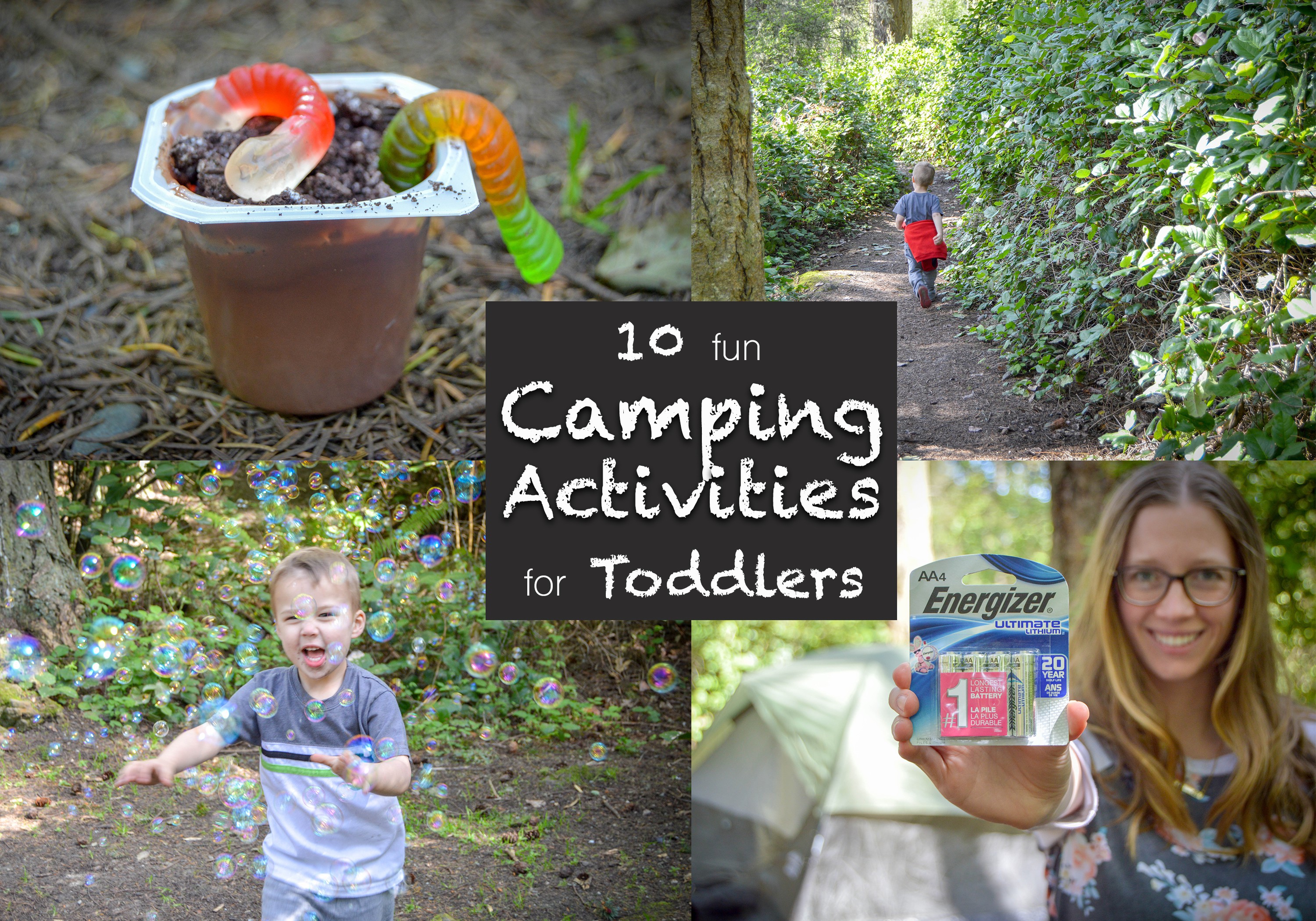
Camping introduces children to wilderness skills, self-reliance, and deep nature connection. These activities can be practiced in backyards, local parks, or wilderness areas, gradually building confidence and outdoor competence.
Shelter Building and Fort Construction
Building shelters teaches problem-solving, engineering principles, and resourcefulness while providing a sense of accomplishment and ownership over outdoor spaces.
Natural Materials Shelters:
- Debris Huts: Layer leaves and branches over a basic frame
- Lean-tos: Simple angled shelters against trees or rocks
- Tarp Shelters: Combine natural materials with modern tarps
- Snow Shelters: Build quinzhees and snow caves in winter
Backyard Fort Ideas:
- Branch Tipis: Arrange long branches in cone shape
- Blanket Forts: Use clotheslines and outdoor furniture
- Cardboard Castles: Weatherproof cardboard constructions
- Living Forts: Train growing plants into shelter shapes
Campfire Skills and Cooking
Fire skills teach responsibility, science concepts, and traditional survival techniques while creating opportunities for group bonding and outdoor cooking experiences.
Age-Appropriate Fire Activities:
Ages 3-6:
- • Gather safe kindling materials
- • Learn fire safety rules
- • Help with food preparation
- • Observe fire building process
Ages 7-11:
- • Build fire lay structures
- • Light fires with supervision
- • Cook simple camp meals
- • Maintain and extinguish fires
Ages 12+:
- • Master various ignition methods
- • Plan and prepare complete meals
- • Teach fire skills to younger children
- • Practice advanced cooking techniques
Outdoor Survival Skills
Basic survival skills build confidence, self-reliance, and appreciation for human adaptation capabilities while teaching respect for natural environments.
Navigation Skills:
- • Using compasses and maps effectively
- • Reading natural navigation signs
- • Creating landmark maps of familiar areas
- • GPS basics and technology integration
Water and Food:
- • Identifying safe water sources
- • Simple water purification methods
- • Recognizing edible wild plants (with experts)
- • Food storage and preservation techniques
Night Activities and Stargazing
Nighttime outdoor activities offer unique sensory experiences and learning opportunities while building comfort with natural darkness and nocturnal environments.
Night Games:
- Flashlight Tag: Classic tag with added visibility challenges
- Night Sounds Bingo: Identify nocturnal animal sounds
- Shadow Puppet Theater: Create stories with flashlight shadows
- Glow Stick Games: Various activities using glow sticks for visibility
Astronomy Activities:
- Constellation Hunting: Learn major constellation patterns
- Planet Tracking: Observe visible planets throughout seasons
- Meteor Shower Watching: Time viewing for peak celestial events
- Moon Phase Journals: Track and record lunar changes
Water Activities and Aquatic Adventures

Water activities provide unique sensory experiences, cooling relief during hot weather, and opportunities to learn about aquatic ecosystems. These activities can range from simple backyard water play to more complex aquatic explorations.
Backyard Water Fun
Transform any outdoor space into a water playground with creative activities that require minimal setup but provide maximum entertainment value.
Water Balloon Activities
- • Water balloon tosses and catches
- • Balloon piñata games
- • Team relay races
- • Target practice games
Sprinkler Activities
- • Sprinkler limbo competitions
- • Dance party in sprinklers
- • Obstacle course navigation
- • Car wash dramatic play
Water Table Experiments
- • Floating and sinking tests
- • Water transfer and pouring
- • Bubble-making stations
- • Aquatic sensory play
Natural Water Exploration
Streams, ponds, and lakes offer rich environments for ecological learning and water-based adventures, always with appropriate safety measures and adult supervision.
Stream and Creek Activities:
- Rock Skipping: Learn techniques for maximum skips across water
- Dam Building: Create temporary structures with natural materials
- Aquatic Life Observation: Identify fish, insects, and plants
- Water Quality Testing: Simple pH and clarity assessments
- Fossil Hunting: Search stream beds for geological specimens
- Flow Experiments: Study water movement and erosion
- Seasonal Changes: Observe water bodies across seasons
- Photography Projects: Document aquatic environments
Beach and Lake Activities
Larger water bodies provide opportunities for more extensive aquatic activities and learning about marine and freshwater ecosystems.
Beach Activities:
- • Sand castle construction and architecture
- • Seashell collection and identification
- • Tide pool exploration and marine life study
- • Beach combing for natural treasures
- • Sand sculpture competitions
- • Wave pattern observation and recording
Lake Activities:
- • Fishing and fish identification lessons
- • Canoe and kayak skill building
- • Swimming and water safety practice
- • Lake ecosystem food chain studies
- • Water bird watching and behavior study
- • Seasonal ice activities and observations
Educational Outdoor Learning Experiences

Outdoor environments provide natural laboratories for hands-on learning across all academic subjects. These activities integrate education with nature exploration, making abstract concepts tangible and memorable through direct experience.
Science Investigations
Transform outdoor spaces into science laboratories where children can conduct real experiments and observe natural phenomena firsthand.
Weather and Climate Studies:
- Weather Station Setup: Build and maintain simple weather monitoring equipment
- Cloud Identification: Learn cloud types and what they indicate about weather
- Temperature Tracking: Monitor daily and seasonal temperature variations
- Precipitation Measurement: Collect and analyze rainfall and snowfall data
- Wind Direction Studies: Create wind vanes and observe wind patterns
Ecology and Biology:
- Food Web Mapping: Track energy flow in local ecosystems
- Population Studies: Count and monitor local wildlife populations
- Plant Growth Experiments: Test variables affecting plant development
- Pollinator Observations: Study relationships between plants and pollinators
- Habitat Assessment: Evaluate quality of local wildlife habitats
Mathematics in Nature
Discover mathematical concepts naturally occurring in outdoor environments, making abstract mathematical principles concrete and observable.
Geometry in Nature:
- • Identify geometric shapes in leaves, flowers, and rocks
- • Measure angles in tree branches
- • Calculate areas of garden plots
- • Study symmetry in natural objects
Measurement Activities:
- • Estimate and measure tree heights
- • Calculate distances using pacing
- • Measure garden harvest weights
- • Track growth rates of plants
Data Collection:
- • Create graphs of weather data
- • Count and categorize wildlife sightings
- • Chart seasonal changes over time
- • Calculate averages from nature observations
Language Arts and Storytelling
Use natural settings to inspire creative writing, storytelling, and communication skills while building vocabulary through direct observation and experience.
Nature Journaling:
- • Daily observations and reflections
- • Sketch and describe natural phenomena
- • Create field guide entries for local species
- • Write poetry inspired by natural settings
- • Document seasonal changes through writing
Outdoor Storytelling:
- • Create stories about animals and plants
- • Practice oral tradition and folklore
- • Develop characters based on nature observations
- • Write adventure stories set outdoors
- • Share family histories connected to nature
History and Cultural Studies
Connect with historical and cultural perspectives through outdoor exploration, learning about human relationships with natural environments across time and cultures.
Historical Connections:
- Local History: Research how indigenous peoples used local plants and landscapes
- Pioneer Skills: Practice historical survival and daily living skills
- Archaeological Awareness: Learn to recognize and protect historical sites
- Seasonal Traditions: Explore cultural celebrations tied to natural cycles
- Migration Patterns: Study how geography influenced human settlement
- Agriculture History: Learn about historical farming and food production
- Transportation Routes: Understand how natural features shaped travel
- Cultural Landscapes: Observe how different cultures modified environments
Seasonal Outdoor Activities

Each season offers unique opportunities for outdoor exploration and activities. Understanding and embracing seasonal changes helps children develop appreciation for natural cycles while providing year-round outdoor engagement possibilities.
Spring Activities: Renewal and Growth
Spring offers opportunities to observe nature's renewal and participate in activities that celebrate new growth and emerging life.
Gardening and Planting:
- Seed Starting: Begin vegetable and flower gardens from seeds
- Container Gardens: Create portable gardens in pots and planters
- Butterfly Gardens: Plant flowers that attract pollinators
- Herb Spirals: Build efficient herb growing structures
- Companion Planting: Learn beneficial plant relationships
Wildlife Observation:
- Bird Migration Tracking: Observe returning species and behaviors
- Nest Box Building: Create homes for local bird species
- Pollinator Counts: Monitor bee and butterfly populations
- Amphibian Studies: Find and identify frogs and salamanders
- Phenology Journals: Record timing of natural events
Summer Activities: Peak Growth and Adventure
Summer provides ideal conditions for extended outdoor adventures, water activities, and intensive nature study during the peak growing season.
Water Activities:
- • Stream ecology studies
- • Water quality testing
- • Aquatic insect identification
- • Swimming and water safety
- • Beach and lake exploration
Extended Adventures:
- • Multi-day camping trips
- • Backpacking and hiking
- • Overnight nature observation
- • Wilderness survival skills
- • Extended photography projects
Garden Maintenance:
- • Harvesting and food preservation
- • Pest management strategies
- • Composting and soil building
- • Seed saving for next year
- • Garden productivity tracking
Fall Activities: Harvest and Preparation
Fall brings opportunities to observe natural preparation for winter, participate in harvest activities, and study seasonal migration patterns.
Harvest Activities:
- • Apple picking and orchard visits
- • Pumpkin growing and harvesting
- • Nut collecting and identification
- • Late-season garden produce gathering
- • Wild edible plant identification (with experts)
- • Food preservation workshops
Preparation Observations:
- • Animal behavior changes and preparation
- • Bird migration timing and patterns
- • Leaf color change science
- • Seed dispersal mechanism studies
- • Weather pattern shifts and forecasting
- • Tree and plant dormancy preparation
Winter Activities: Adaptation and Survival
Winter outdoor activities teach adaptation skills, winter ecology, and provide unique recreational opportunities while building resilience and cold-weather competence.
Snow and Ice Activities:
- Snow Science: Study snowflake formation and ice crystal structures
- Animal Tracking: Follow winter animal signs and tracks
- Ice Experiments: Explore freezing points and ice formation
- Snow Shelters: Build quinzhees and snow caves for protection
- Winter Sports: Learn skiing, snowshoeing, and ice skating
Winter Ecology:
- Dormancy Studies: Observe how plants and animals survive winter
- Bird Feeding: Support local wildlife through feeding programs
- Evergreen Identification: Learn trees and plants that stay active
- Winter Weather: Study how cold affects natural processes
- Indoor Growing: Continue gardening projects indoors
Essential Safety Guidelines for Outdoor Activities

Safety First Philosophy
Safety must always be the top priority in outdoor activities. While we want children to experience adventure and challenge, proper preparation, supervision, and risk management ensure these experiences remain positive and injury-free.
Pre-Activity Planning and Preparation
Risk Assessment Checklist:
- Weather Conditions: Check current and forecasted weather, plan for changes
- Terrain Evaluation: Assess difficulty level appropriate for group abilities
- Water Safety: Identify water hazards and required safety equipment
- Wildlife Considerations: Research local wildlife and appropriate precautions
- Emergency Access: Ensure cell service or communication plans exist
- Group Dynamics: Match activities to age ranges and skill levels
Essential Preparation Steps:
- Route Planning: Share plans with others, including expected return times
- Equipment Check: Verify all safety gear is functional and appropriate
- Medical Information: Know participants' medical conditions and medications
- Emergency Contacts: Carry contact information for all participants
- Skill Assessment: Ensure leaders have appropriate skills for planned activities
- Backup Plans: Prepare alternative activities for changing conditions
Supervision and Group Management
Effective supervision balances safety with independence, allowing children to explore and learn while maintaining appropriate oversight.
Supervision Ratios by Age:
Ages 2-3:
1 adult per 3-4 children for close supervision
Ages 4-6:
1 adult per 6-8 children with clear boundaries
Ages 7-11:
1 adult per 8-10 children with increased freedom
Ages 12+:
1 adult per 12+ children with leadership opportunities
Environmental Hazard Awareness
Plant Hazards
- • Poison ivy, oak, and sumac identification
- • Toxic plant recognition and avoidance
- • Mushroom safety - never eat wild mushrooms
- • Thorny plants and protective clothing
- • Allergic reaction recognition and response
Insect and Animal Safety
- • Tick prevention and daily body checks
- • Bee and wasp sting prevention
- • Snake awareness and safe distance protocols
- • Wild animal encounter procedures
- • Insect repellent use and application
Weather Protection
- • Sun protection and UV awareness
- • Heat illness prevention and hydration
- • Cold weather layering systems
- • Lightning safety and shelter seeking
- • Wind and storm response procedures
Emergency Preparedness and Response
Being prepared for emergencies ensures quick, effective response to injuries or unexpected situations during outdoor activities.
First Aid Essentials:
Basic First Aid Kit Contents:
- • Adhesive bandages in various sizes
- • Sterile gauze pads and medical tape
- • Antiseptic wipes and antibiotic ointment
- • Instant cold packs for injuries
- • Thermometer and pain relief medication
- • Emergency contact information
Emergency Response Protocol:
- • Assess scene safety before approaching injured person
- • Check for consciousness and breathing
- • Call for professional help when needed
- • Provide appropriate first aid within skill level
- • Keep injured person calm and comfortable
- • Document incident details for follow-up
Age-Appropriate Activity Guidelines
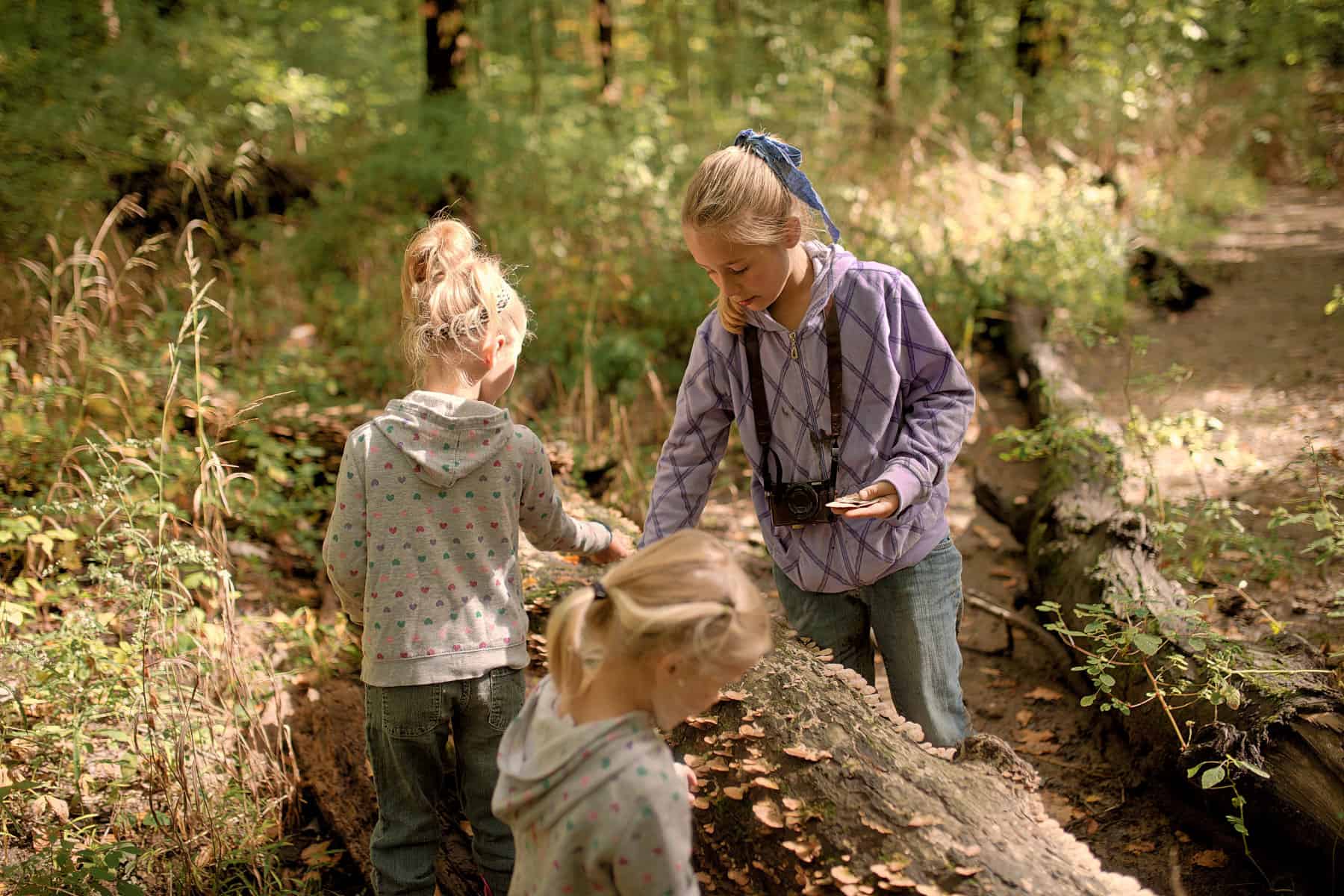
Matching activities to children's developmental stages ensures safety, engagement, and appropriate challenge levels. This guide helps parents and educators select activities that align with physical, cognitive, and social developmental milestones.
Toddlers (Ages 2-4): Discovery and Exploration
Toddlers learn through sensory exploration and simple cause-and-effect activities. Focus on safe, supervised exploration with lots of repetition and immediate feedback.
Recommended Activities:
- Sensory Gardens: Touch different textures, smell flowers, taste safe herbs
- Water Play: Simple pouring, splashing, and floating activities
- Nature Collecting: Gather leaves, rocks, and flowers in buckets
- Simple Movements: Walking on different surfaces, climbing low structures
- Animal Observation: Watch birds, squirrels, and insects from safe distances
Safety Considerations:
- Constant Supervision: Never leave toddlers unsupervised outdoors
- Choking Hazards: Remove small objects that could be swallowed
- Physical Boundaries: Use gates, fences, or natural barriers
- Sun Protection: Hats, sunscreen, and shaded rest areas
- Clean-up: Wash hands frequently, especially after touching soil
Preschoolers (Ages 4-6): Active Learning and Creativity
Preschoolers can follow simple rules, engage in cooperative play, and handle more complex activities. They benefit from structured activities that build specific skills while allowing for creative expression.
Physical Development:
- • Obstacle courses with jumping, crawling, balancing
- • Ball games with larger, softer balls
- • Nature scavenger hunts with picture clues
- • Simple gardening tasks like watering and harvesting
Cognitive Development:
- • Counting games using natural objects
- • Color and shape identification activities
- • Simple science experiments with water and soil
- • Pattern recognition in leaves and flowers
Social Development:
- • Cooperative building projects with natural materials
- • Turn-taking games like "Follow the Leader"
- • Group storytelling sessions outdoors
- • Helping younger children with simple tasks
School Age (Ages 6-11): Skill Building and Independence
School-age children can handle more complex rules, work independently for longer periods, and take on leadership roles. They're ready for activities that build specific skills and provide appropriate challenges.
Advanced Activities:
- Camping Skills: Fire building, knot tying, shelter construction
- Navigation: Using compasses and maps for treasure hunts
- Scientific Studies: Conducting experiments and recording data
- Sports Skills: Team games with complex rules and strategies
- Environmental Projects: Habitat restoration and conservation work
Leadership Opportunities:
- Peer Teaching: Help younger children learn outdoor skills
- Activity Planning: Help design and lead group activities
- Safety Monitoring: Assist adults with safety oversight
- Project Management: Lead long-term projects like gardens
- Environmental Education: Present findings to other groups
Adolescents (Ages 12+): Challenge and Adventure
Adolescents seek independence, challenge, and meaningful experiences. They can handle complex activities, take significant responsibility, and benefit from activities that build confidence and life skills.
Advanced Challenges:
- Multi-day Expeditions: Backpacking and extended wilderness trips
- Technical Skills: Rock climbing, advanced water sports, winter camping
- Leadership Development: Leading younger groups and peer mentoring
- Service Projects: Environmental restoration and community service
- Independent Research: Self-directed scientific or cultural studies
- Risk Assessment: Learning to evaluate and manage outdoor risks
- Group Dynamics: Facilitating group decision-making and conflict resolution
- Emergency Response: Advanced first aid and rescue techniques
- Environmental Advocacy: Leading conservation and awareness campaigns
- Career Exploration: Connecting outdoor interests to potential careers
Essential Equipment and Gear for Outdoor Activities
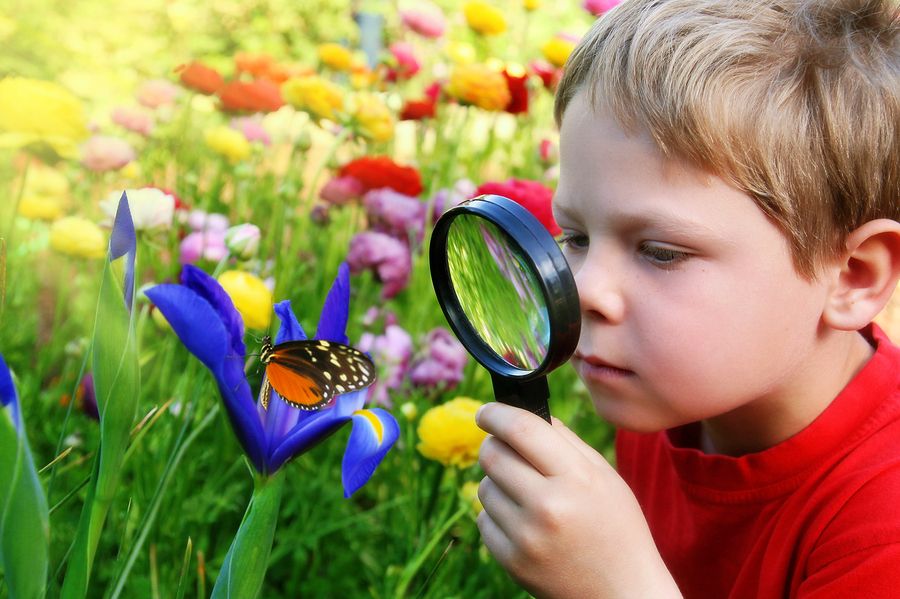
Having appropriate equipment enhances safety, comfort, and learning opportunities during outdoor activities. This guide covers essential gear for different activities and age groups, helping families make informed decisions about outdoor equipment investments.
Basic Equipment for All Activities
Every outdoor adventure benefits from certain essential items that promote safety, comfort, and enjoyment regardless of the specific activity.
Clothing Essentials
- Layering System: Base layer, insulating layer, weather protection
- Sun Protection: Wide-brimmed hats, UV-protective clothing
- Footwear: Appropriate shoes for terrain and activity
- Extra Clothing: Dry clothes for water activities or accidents
- Weather Gear: Rain jackets, warm layers, wind protection
Safety Equipment
- First Aid Kit: Age-appropriate supplies and medications
- Communication: Whistle, cell phone, two-way radios
- Navigation: Map, compass, GPS device
- Emergency Shelter: Emergency blanket or tarp
- Lighting: Flashlight or headlamp with extra batteries
Comfort Items
- Hydration: Water bottles or hydration systems
- Nutrition: Snacks and meals appropriate for duration
- Sun Protection: Sunscreen, sunglasses, lip balm
- Insect Protection: Repellent, protective clothing
- Comfort Items: Sitting pads, small pillow, favorite small toy
Activity-Specific Equipment
Different activities require specialized equipment to ensure safety and maximize learning and enjoyment opportunities.
Nature Exploration Gear:
- Magnifying Glasses: Various powers for different observations
- Collection Containers: Bug boxes, specimen jars, collection bags
- Field Guides: Age-appropriate identification books
- Binoculars: Lightweight, child-sized optics
- Measuring Tools: Rulers, measuring tapes, scales
- Recording Materials: Notebooks, pencils, clipboards
- Photography Equipment: Cameras or smartphones
- Digging Tools: Small shovels, trowels for investigation
- pH Test Strips: For water quality testing
- Thermometers: Air and water temperature monitoring
Camping and Wilderness Gear:
- Shelter: Tents, tarps, sleeping bags, pads
- Cooking Equipment: Camp stoves, pots, utensils
- Fire Safety: Fire-resistant gloves, water, shovel
- Rope and Cordage: Various lengths for shelter and activities
- Multi-tools: Age-appropriate tools with safety features
- Water Purification: Filters, purification tablets
- Food Storage: Bear-proof containers, coolers
- Personal Hygiene: Biodegradable soap, toilet paper
- Entertainment: Cards, books, games for camp time
- Repair Kit: Duct tape, patches, basic repair supplies
Water Activity Equipment:
- Personal Flotation: Properly fitted life jackets
- Swimming Gear: Goggles, swim caps, pool noodles
- Water Shoes: Protection for feet in rocky or rough areas
- Quick-dry Towels: Lightweight, fast-drying materials
- Waterproof Storage: Dry bags for electronics and clothing
- Water Testing Kits: For stream and pond quality assessment
- Aquatic Nets: For catching and observing water creatures
- Underwater Viewers: For observing aquatic life
- Fishing Gear: Age-appropriate rods, tackle, licenses
- Emergency Equipment: Throw ropes, emergency whistles
Budget-Friendly Equipment Options
Outdoor activities don't require expensive equipment. Many essential items can be improvised, borrowed, or purchased affordably while still ensuring safety and enjoyment.
DIY Equipment:
- • Homemade magnifying glasses using water drops
- • Collection containers from recycled jars
- • Weather instruments from household items
- • First aid kits assembled from basic supplies
- • Navigation tools using simple compasses
Borrowing and Sharing:
- • Community lending libraries for outdoor gear
- • Sharing equipment between families
- • School or youth organization equipment loans
- • Rental options for expensive items
- • Group purchases for bulk savings
Smart Shopping:
- • End-of-season sales for outdoor gear
- • Thrift stores and consignment shops
- • Generic brands that meet safety standards
- • Multi-use items that serve multiple purposes
- • Growing with adjustable or modular equipment
Conclusion: Building Lifelong Outdoor Connections
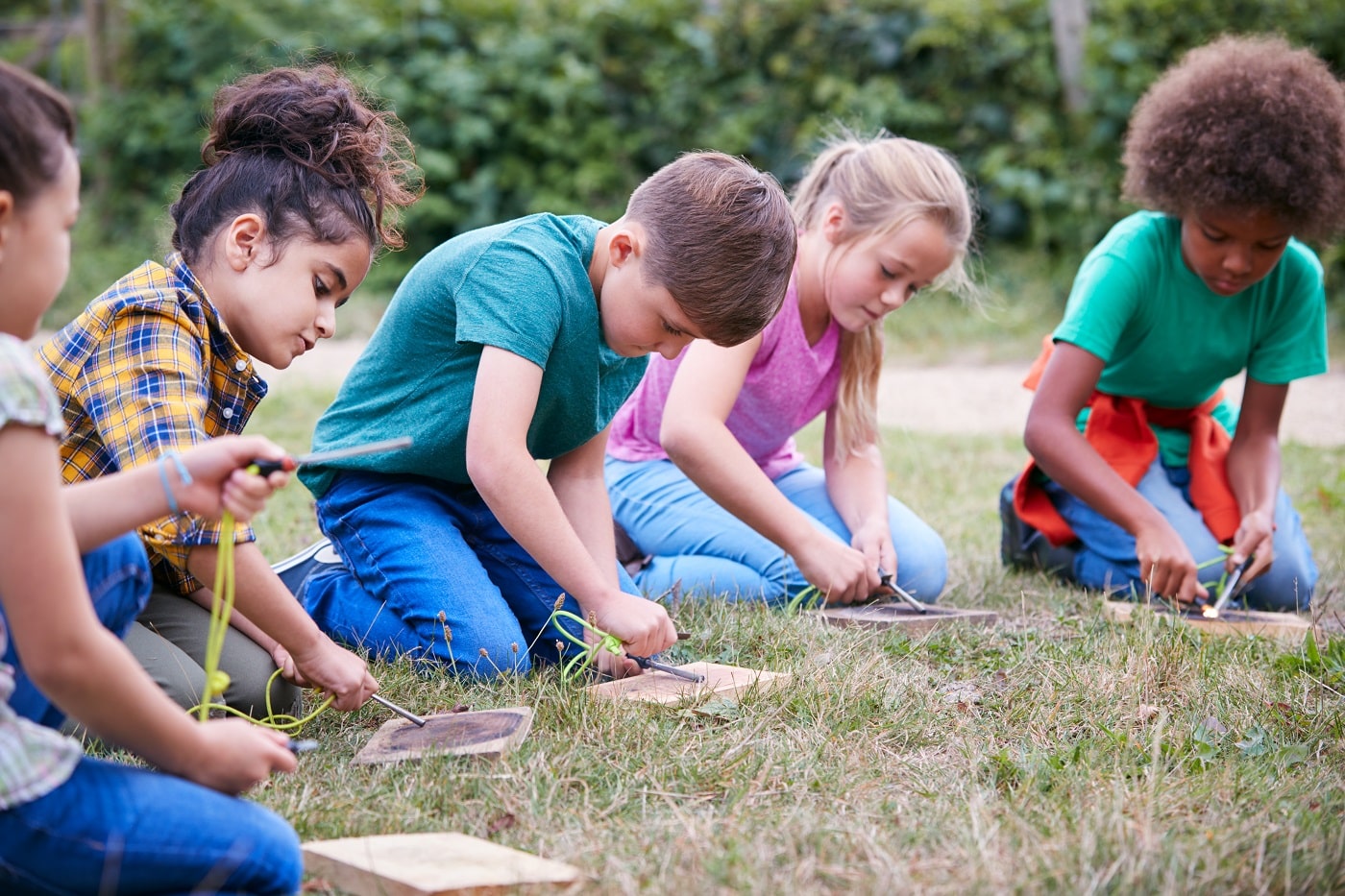
The journey through outdoor activities with children represents far more than simple recreation – it's an investment in their physical health, cognitive development, emotional well-being, and environmental consciousness that will serve them throughout their lives. The 50+ activities presented in this comprehensive guide offer pathways to discovery, learning, and growth that no indoor environment can replicate.
Every mud pie created in the garden teaches chemistry and creativity. Every trail hiked builds physical strength and mental resilience. Every camping trip develops self-reliance and appreciation for natural systems. These experiences accumulate into a foundation of outdoor competence and environmental stewardship that shapes how children see themselves in relationship to the natural world.
The benefits extend beyond individual children to families and communities. Shared outdoor adventures create bonds, traditions, and memories that strengthen family relationships. Children who grow up comfortable in outdoor environments become adults who value and protect natural spaces, contributing to environmental conservation for future generations.
Starting small makes the difference. A daily walk around the neighborhood, a weekend camping trip in the backyard, or a simple nature scavenger hunt can ignite a lifelong passion for outdoor exploration. The key is consistency and enthusiasm – children mirror the attitudes and behaviors of the adults around them, so approaching outdoor activities with curiosity and joy creates positive associations that last a lifetime.
Growing Outdoor Families
Creating an "outdoor family" doesn't happen overnight. It develops through consistent exposure, positive experiences, and gradual skill building. Start with activities that match your family's current comfort level and gradually expand your outdoor repertoire as confidence and competence grow.
Remember that every child is different – some may immediately embrace wilderness adventures while others prefer structured activities in familiar settings. The goal is finding outdoor experiences that resonate with each individual child while maintaining safety and enjoyment for everyone involved.
The current generation of children faces unique challenges: increased screen time, reduced physical activity, and diminished connection to natural environments. Outdoor activities provide powerful antidotes to these modern challenges while building skills, confidence, and perspectives that serve children throughout their lives.
Technology can enhance rather than replace outdoor experiences. Digital cameras capture nature observations, GPS devices teach navigation skills, and identification apps support learning about local flora and fauna. The key is using technology as a tool that enhances outdoor exploration rather than a substitute for direct natural experience.
Safety remains paramount in all outdoor activities, but calculated risks are essential for growth and learning. Children need opportunities to test their limits, make decisions, and experience natural consequences in supportive environments. This builds resilience, judgment, and self-confidence that transfers to all areas of life.
Your Outdoor Journey Starts Now
The perfect time to start outdoor adventures with children is right now, regardless of season, weather, or current skill level. Every outdoor experience builds on previous ones, creating a progression of competence and confidence that opens doors to increasingly exciting adventures.
Begin with activities that excite your family and gradually expand your outdoor repertoire. Document your adventures through photos, journals, or videos to track progress and create lasting memories of your outdoor journey together.
Start Your Family's Outdoor Adventure Today!
Don't wait for perfect conditions or complete equipment. Choose one activity from this guide and try it with your children this week. Every outdoor adventure begins with a single step outside the door.
Continue the adventure indoors with engaging stories that inspire outdoor exploration and nature appreciation.
Continue Your Outdoor Learning Journey
Winter Outdoor Activities for Kids
Discover cold-weather adventures that keep children active and engaged throughout winter months.
Urban Nature Activities
Find nature and outdoor adventures in city environments and urban settings.
Backyard Wildlife Habitats
Create wildlife-friendly spaces that bring nature to your outdoor adventures.
Outdoor STEM Learning
Integrate science, technology, engineering, and math into outdoor activities.
Family Camping Guide
Plan successful camping trips that create lasting family memories and outdoor skills.
Nature Photography for Kids
Combine creativity with outdoor exploration through nature photography projects.